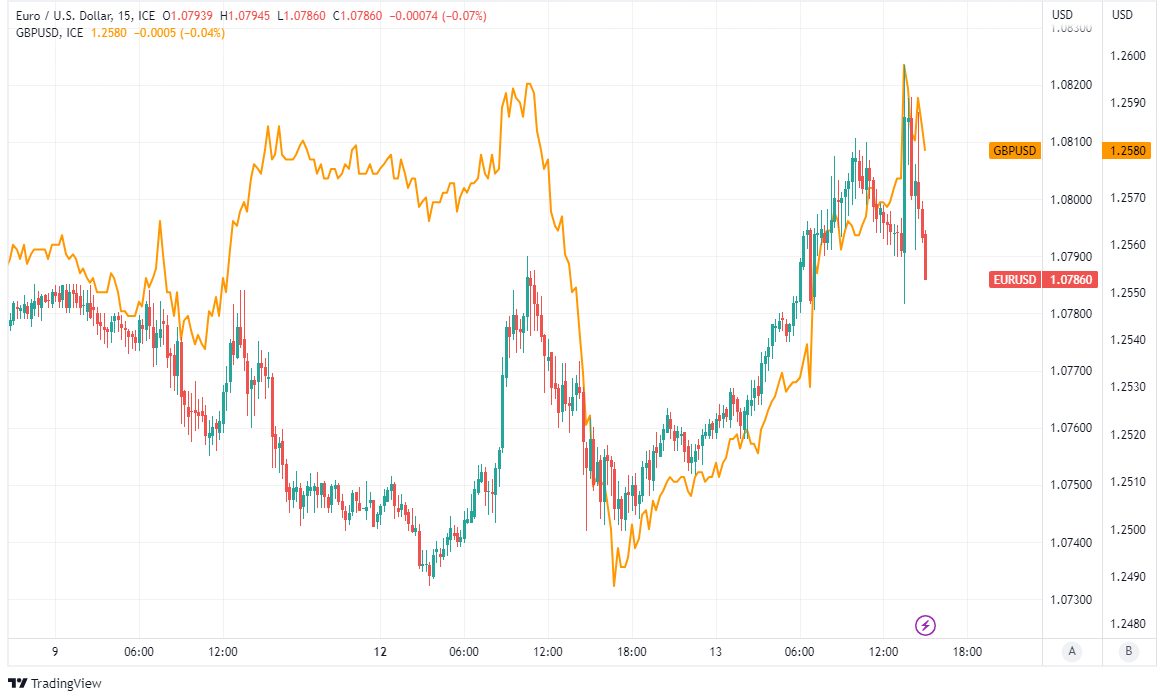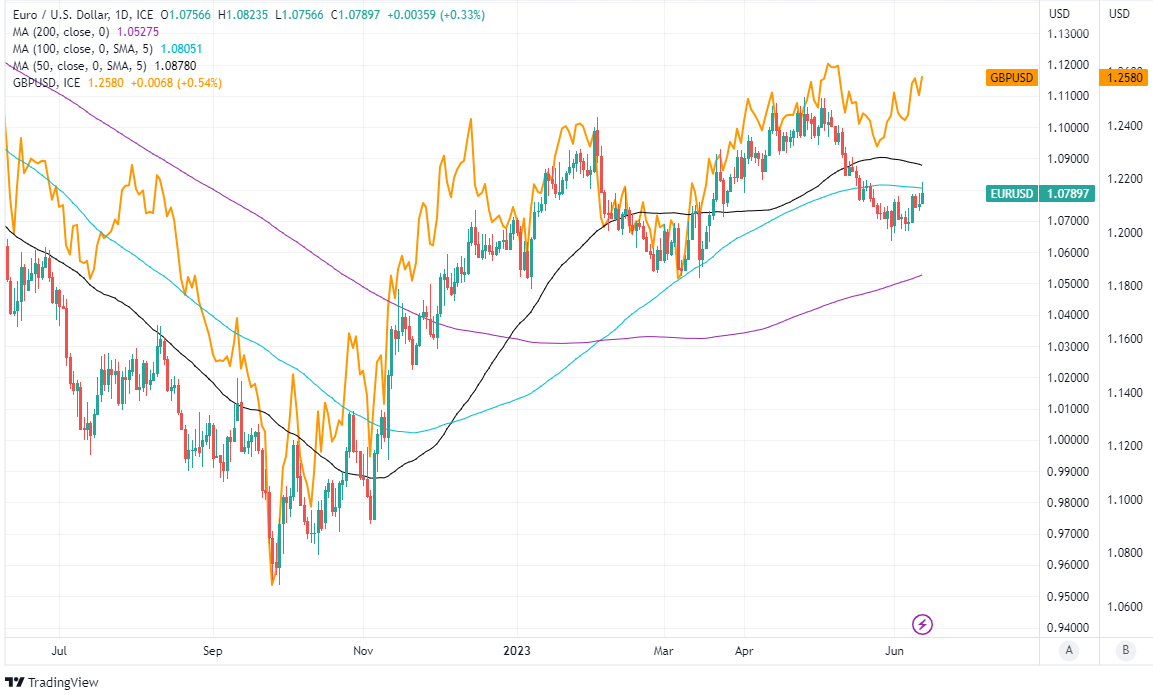EURUSD: U.S. Inflation Rally Fizzles as Fed Risk Looms
- Written by: James Skinner
-
"We are in a weird situation here where the rate of change is good news (inflation is falling) but the level is not great (inflation is 5.2% vs. 2.0% target)" Spectra Markets.

Image © Adobe Images
The Euro to Dollar exchange rate rallied briefly to June highs after official data suggested U.S. inflation is closing in on its target and seemingly reducing pressure on the Federal Reserve (Fed) to raise interest rates further but new forecasts for borrowing costs could yet upset the market on Wednesday.
Europe's single currency extended an earlier rally to rise briefly above 1.08 on Tuesday as the Dollar sold off after the Bureau of Labor Statistics said inflation rose 0.1% in May, leading the annual rate to decline from 4.9% to 4% along the way, though its gains were quick to fade.
The moderation of inflation was also much less notable when energy and food price changes are set to one aside.
"The underlying price pressure remains persistent, as evidenced by the still high core rate of 5.3%. The US Federal Reserve is unlikely to raise interest rates any further tomorrow. However, speculation about interest rate cuts later this year seems premature," says Dr. Christoph Balz, a senior economist at Commerzbank.
Core inflation, which overlooks both of the latter and so is often viewed by central bankers as a better reflection of domestically-generated inflation trends, fell from 5.5% to 5.3% in line with expectations but still left it sat quite some distance above the main inflation rate.

Above: Euro to Dollar rate shown at 15-minute intervals alongside GBP/USD. Click for closer inspection.
Last month's price declines were steepest and broadest for energy commodities like gasoline and fuel oil while increases were strongest for used cars and trucks.
Inflation also picked up in other core categories including medical care, rental accommodation and transport services, however.
"Such rapid headline disinflation will make it harder for the Fed to justify raising rates again, but we can’t rule out a July hike yet," he adds.
Short-term U.S. bond yields fell following the release and it's possible the Euro-Dollar rally reflects a market view that the data makes further increases in interest rates less likely but the risk is of that idea being undermined as soon as Wednesday when the latest Federal Open Market Committee forecasts are released.

Above: Euro to Dollar rate shown at daily intervals alongside GBP/USD. Click for closer inspection.
"Until very recently it's been clear that further policy firming would be required but as policy has become more restrictive the risks of doing too much versus doing too little are becoming more balanced. Our policy has adjusted to reflect that fact," Fed Chairman Jerome Powell said late in May.
"So we haven't made any decisions but, given how far we've come and as I noted, we can afford to look at the data and the evolving outlook and make careful assessments," he told an audience at the Thomas Laubach Research Conference in May.
Numerous Fed officials have suggested in the last month that it could be appropriate to leave interest rates unchanged on Wednesday but stopped short of calling an end to the tightening cycle that began last March and has since seen the Fed Funds rate rise 500 basis points to 5.25%.
"The market is keen to sell USD, but I don’t really think that is the play, especially with FOMC tomorrow and people’s desire to hold risk through that event likely to be low," says Brent Donnelly, CEO at Spectra Markets and a veteran currency trader with a career spent between hedge funds and global banks like HSBC and Nomura.
"We are in a weird situation here where the rate of change is good news (inflation is falling) but the level is not great (inflation is 5.2% vs. 2.0% target)," he adds in Tuesday's edition of the am/FX daily macro newsletter.





